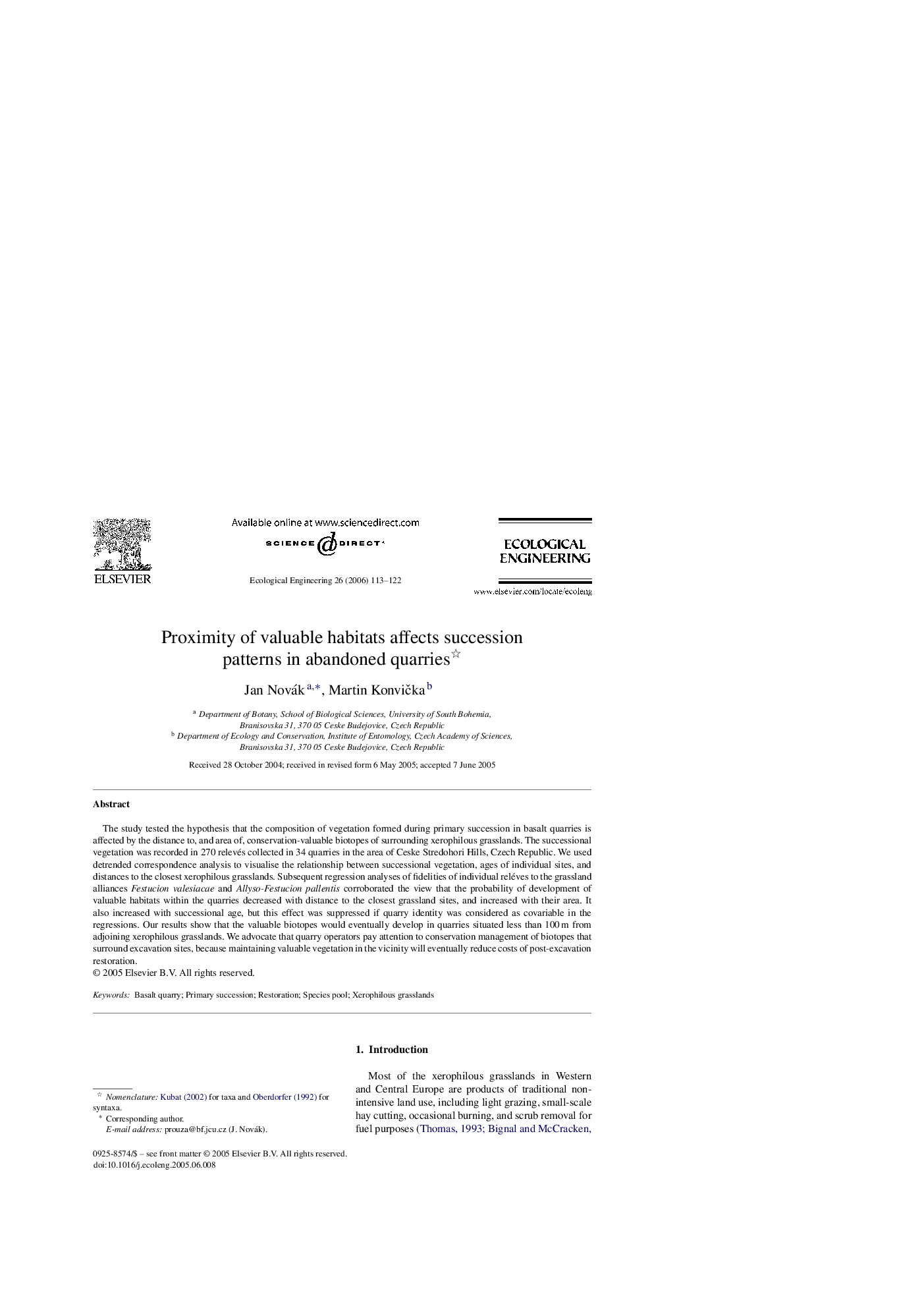| Article ID | Journal | Published Year | Pages | File Type |
|---|---|---|---|---|
| 4391340 | Ecological Engineering | 2006 | 10 Pages |
The study tested the hypothesis that the composition of vegetation formed during primary succession in basalt quarries is affected by the distance to, and area of, conservation-valuable biotopes of surrounding xerophilous grasslands. The successional vegetation was recorded in 270 relevés collected in 34 quarries in the area of Ceske Stredohori Hills, Czech Republic. We used detrended correspondence analysis to visualise the relationship between successional vegetation, ages of individual sites, and distances to the closest xerophilous grasslands. Subsequent regression analyses of fidelities of individual reléves to the grassland alliances Festucion valesiacae and Allyso-Festucion pallentis corroborated the view that the probability of development of valuable habitats within the quarries decreased with distance to the closest grassland sites, and increased with their area. It also increased with successional age, but this effect was suppressed if quarry identity was considered as covariable in the regressions. Our results show that the valuable biotopes would eventually develop in quarries situated less than 100 m from adjoining xerophilous grasslands. We advocate that quarry operators pay attention to conservation management of biotopes that surround excavation sites, because maintaining valuable vegetation in the vicinity will eventually reduce costs of post-excavation restoration.
